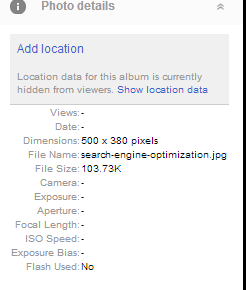Social SEO: The importance of social signals for your SEO – Part 2

On the first blog post we covered the 1st part of social signals for SEO analyzing on how social signals work with the use of a simplified diagram how social signals work on site.
This part is going to cover more extensively the off-site social SEO and how analytics can help you identify the impact of your social media channels.
Off-site Optimization
Twitter and Social SEO
Twitter is social microblogging service and it can potentially be a great source of referral traffic for your website. When a business develops sharable content on Twitter, it is most likely that the post/tweets will be dynamically shared by users throughout the social web. The number of Favorites, RTs (retweets) is only just of the signals that can be seen by search engines, such as Google (another signal is the number of lists that the business has been added by other users –indicator of authority).
It is important to highlight the fact that the nofollow attribute applies on Twitter which means that the links that point to your company website might not carry any significant value. But as Google has admitted, in certain cases of links that repeatedly are shared, from Google they do give a value on these links.
It is worth mentioning that Google calculates the fact that a link carries more weight depending on the person who tweets it.
Thus it is important it is important for your business to take advantage of the full potentials of Twitter by creating sharable content that is associated, relevant to the nature of your business.
G+ and Social SEO
G+ is a social network developed by Google. So when you try to develop you content for Google+ try to develop it as if you would optimize a website. For example on the ‘About’ section, describe your business as thoroughly as possible, by including important info (keywords, links that point to your website). Make sure that you keep an analogy of followers/following like Twitter (for example, if you have 10 in your circles, it’s much better to be in 40 circles, than the opposite), so that you establish your position as authority. The more users have you in their circles the more trustworthy and reliable your business is. Of course to achieve this kind or outcome is a strenuous process that will take time. Ensure that you create sharable content, with images and links that will point to your website. It is highly recommended that your images are optimized, exactly as if you would do for your website.

If you manage to create sharable and appealing content through your g+ account, more +1s (equivalent to Like), shares will come up. These are social signals (+1s, comment, share) that can enhance your position and bring more referral traffic.
Linkedin and Social SEO
Depending on the type of business you are running, it’s important to have in mind that the increase of your reliability and trustworthiness can come from other influencers. Particularly from influencers that come from the same industry and they share your content.
Thus, it is important to establish your position with the creation of high quality and fresh content that will be shared by other users (via Linkedin Groups). The more fresh and sharable content you create (with links pointing to your site) which will be shared by other influencers, the more likely for the business is to establish its position in terms of rankings. The social signals will be depicted on the number of links that point to your website and these metrics will appear on the Referral Traffic (of Google Analytics).
Facebook and Social SEO
Facebook is the most popular social networking site and is in a way the ‘’motive power’’ that generates more referral traffic than any other social networking site. The number of likes, shares from users is considered to be a vote of confidence by search engines. When a business posts a Facebook post, then the user who likes that kind of post, this action will be visible other users (the users that are friends to the user that has liked the post) via Facebook Ticker.
In this way, the content of your business can increase its chances to become more viral and thus the more likes and shares it gets the more likely is to give stronger signals to search engines.
Pinterest and Social SEO
One of the highest generators of referral traffic is Pinterest. The creation of images of high quality that are re-pinned/shared by users is a strong signal indicator. A company can measure this kind of impact on its referral traffic especially if the images are clickable and point to the website. That’s why it is important for companies to invest on their social media presence on Pinterest. Repins/shares, comments are indicators that matter for search engines and thus it is important for a business to create descriptive content (including links) that will direct users to the website.

Analytics
If you want to see the efficiency of your social media channels it is strongly advised to use the Backlink Analysis of Web SEO Analytics where you can see the number of incoming links to your website.
With Google Analytics you have a powerful tool which you can use it in order to measure the performance of your social media traffic.
In order to do this, just follow the steps below:
Traffic Sources -> Sources -> Referrals

In this way you will have a complete overview of all 3rd party sites that pointed to your website.
If you want to have only details about the social media traffic (from specific social media channels) that was brought to your site you can follow the process below:
For instance, if you want to know the traffic that came from LinkedIn, just enable the Advanced Filter On and include the term LinkedIn.
In this way, you will be able to see the number of traffic that you have brought from LinkedIn to your website.
Alternatively, if you need something more elaborate, to know for example how many visits exceeded a certain number of visits/goals that you have set for your social media channels, then you can go to:
Advanced Segments -> Custom Segments
It’s up to you to define the social networks that you want to monitor and it’s up to you to define the values that you consider as important.
The values that will be inserted into the tab should be in that form:
facebook.com|twitter.com*
*In order for your values to become accepted on Google Analytics it is absolutely essential for you, to include the slash between ”facebook” and the full-stop. Similarly for Twitter (Twitter.com)


 No Comments
No Comments


